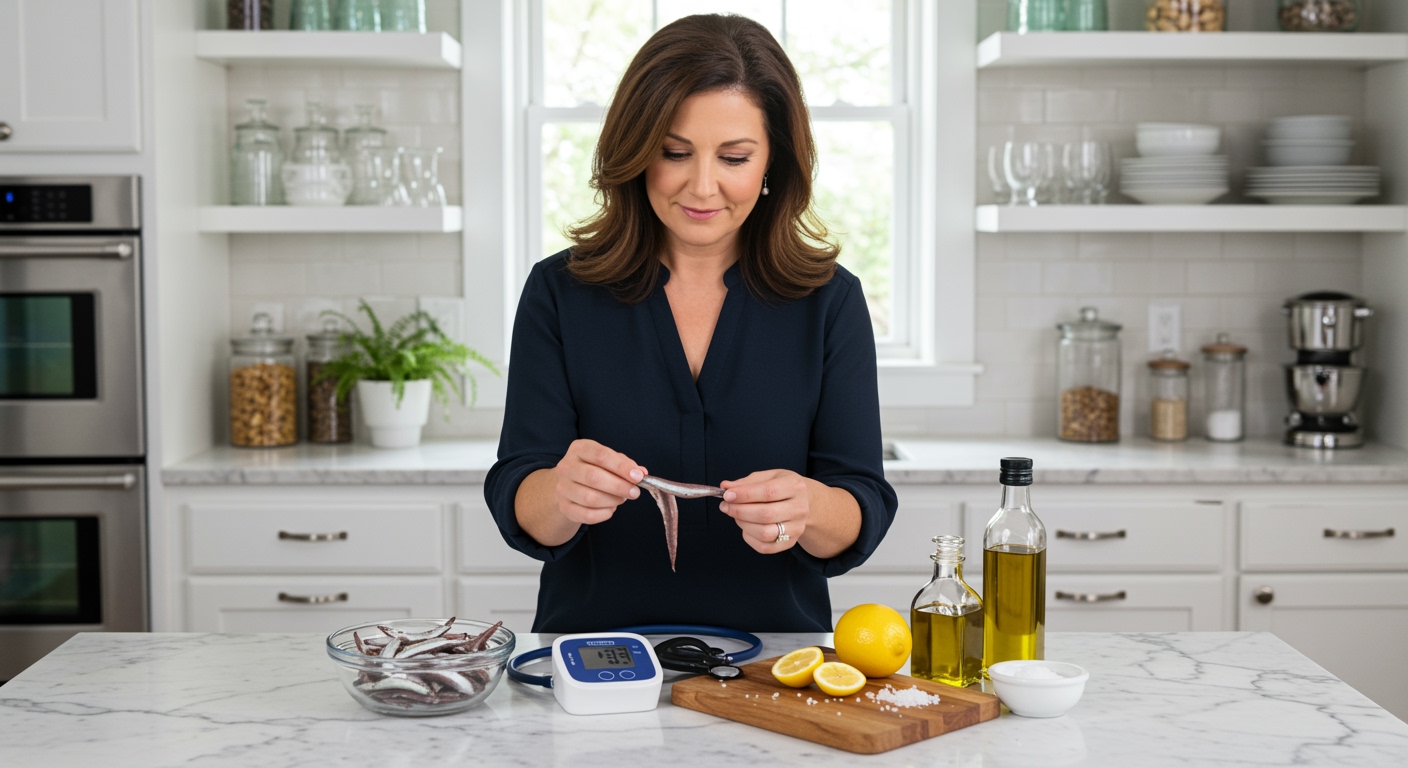✪ Key Takeaway: Cheese can help low blood pressure when you choose low-sodium varieties and control portions properly.
Introduction
Your doctor just told you that your blood pressure runs too low, and now you wonder if that cheese you love could actually help.
Many people with low blood pressure feel confused about dairy products because most advice focuses on high blood pressure instead.
Hi, I am Abdur, your nutrition coach and today I am going to explain exactly how cheese affects low blood pressure and which types work best for your condition.
Does Cheese Actually Raise Blood Pressure?
Cheese contains sodium which can help raise blood pressure levels in people who have hypotension.
The sodium content in cheese varies dramatically between different types and brands.
Regular cheddar cheese contains about 180 milligrams of sodium per ounce, while processed cheese can contain over 400 milligrams.
Your body uses sodium to maintain fluid balance and blood volume, which directly impacts blood pressure readings.
When you consume sodium from cheese, your kidneys retain more water to dilute the sodium concentration in your bloodstream.
This increased blood volume puts more pressure on your artery walls, which can help people with low blood pressure reach healthier levels.
✪ Fact: Research shows that moderate cheese consumption can provide cardiovascular benefits when part of a balanced diet.
Which Types of Cheese Work Best for Low Blood Pressure?
Processed cheeses like American cheese contain the highest sodium levels and work most effectively for raising blood pressure.
Feta cheese provides excellent sodium content with about 316 milligrams per ounce, making it a flavorful option for hypotension management.
Blue cheese and roquefort contain significant sodium levels while offering unique flavors that make meals more enjoyable.
Cottage cheese provides moderate sodium levels plus high protein content that supports overall cardiovascular health.
Fresh mozzarella and ricotta contain lower sodium levels, so they work better when combined with other sodium sources.
Aged cheeses like parmesan pack intense flavor and concentrated sodium, allowing you to use smaller portions while still getting benefits.
✪ Pro Tip: Check nutrition labels because sodium content varies significantly between brands of the same cheese type.
How Much Cheese Should You Eat for Low Blood Pressure?
Start with one ounce of cheese per day and monitor how your blood pressure responds over several weeks.
Most people with low blood pressure benefit from consuming 1500 to 2000 milligrams of sodium daily, which cheese can help provide.
Divide your cheese intake throughout the day rather than eating large amounts at once for steady blood pressure support.
Pair cheese with foods that naturally support blood pressure like whole grains, lean proteins, and healthy fats.
Track your blood pressure readings before and after adding cheese to identify the optimal amount for your body.
Some people need more cheese while others require less depending on their individual sodium sensitivity and baseline blood pressure levels.
✪ Note: Always consult your healthcare provider before making significant dietary changes for blood pressure management.
Are There Any Risks of Eating Cheese for Low Blood Pressure?
Eating too much cheese can raise your blood pressure beyond healthy levels, creating new cardiovascular problems.
High saturated fat content in many cheeses can contribute to arterial plaque buildup over time if consumed excessively.
Some people develop sodium sensitivity that causes blood pressure swings when they consume varying amounts of cheese.
Processed cheeses often contain additives and preservatives that may cause adverse reactions in sensitive individuals.
Weight gain from excessive cheese consumption can worsen low blood pressure symptoms by affecting circulation patterns throughout your body.
People with kidney problems should avoid using cheese to manage blood pressure because excess sodium strains kidney function further.
✪ Fact: Studies show that balanced cheese consumption as part of a Mediterranean diet supports overall heart health.
What Other Foods Work Well With Cheese for Blood Pressure?
Combine cheese with whole grain crackers to create sustained energy release that supports stable blood pressure throughout the day.
Add cheese to salads with leafy greens that provide potassium and magnesium for balanced electrolyte levels.
Pair cheese with nuts and seeds that contain healthy fats and additional minerals that support cardiovascular function.
Include cheese in meals with lean proteins like chicken or fish to create complete nutritional profiles for heart health.
Combine cheese with foods rich in vitamin C like bell peppers or tomatoes to enhance iron absorption and circulation.
Avoid pairing cheese with high-sodium processed foods that could push your blood pressure too high too quickly.
✪ Pro Tip: Create a food diary to track which cheese and food combinations work best for your blood pressure goals.
The Bottom Line
Cheese can definitely help people with low blood pressure when chosen and consumed thoughtfully as part of a balanced eating plan.
Smart food choices create lasting health changes, but only when you understand your body and listen to its responses.
I would love to hear about your experience with cheese and blood pressure management, so please share your questions or feedback in the comments below.
References
At NutritionCrown, we use quality and credible sources to ensure our content is accurate and trustworthy. Below are the sources referenced in creating this article:
- Men’s Health: Cheese Lowers Blood Pressure
- Blood Pressure UK: Say Cheese Researchers Urge for Less Salt
- Penn State University: Eating Cheese May Offset Blood Vessel Damage from Salt
- US Dairy: Eating Cheese Might Provide Heart Health Benefits





